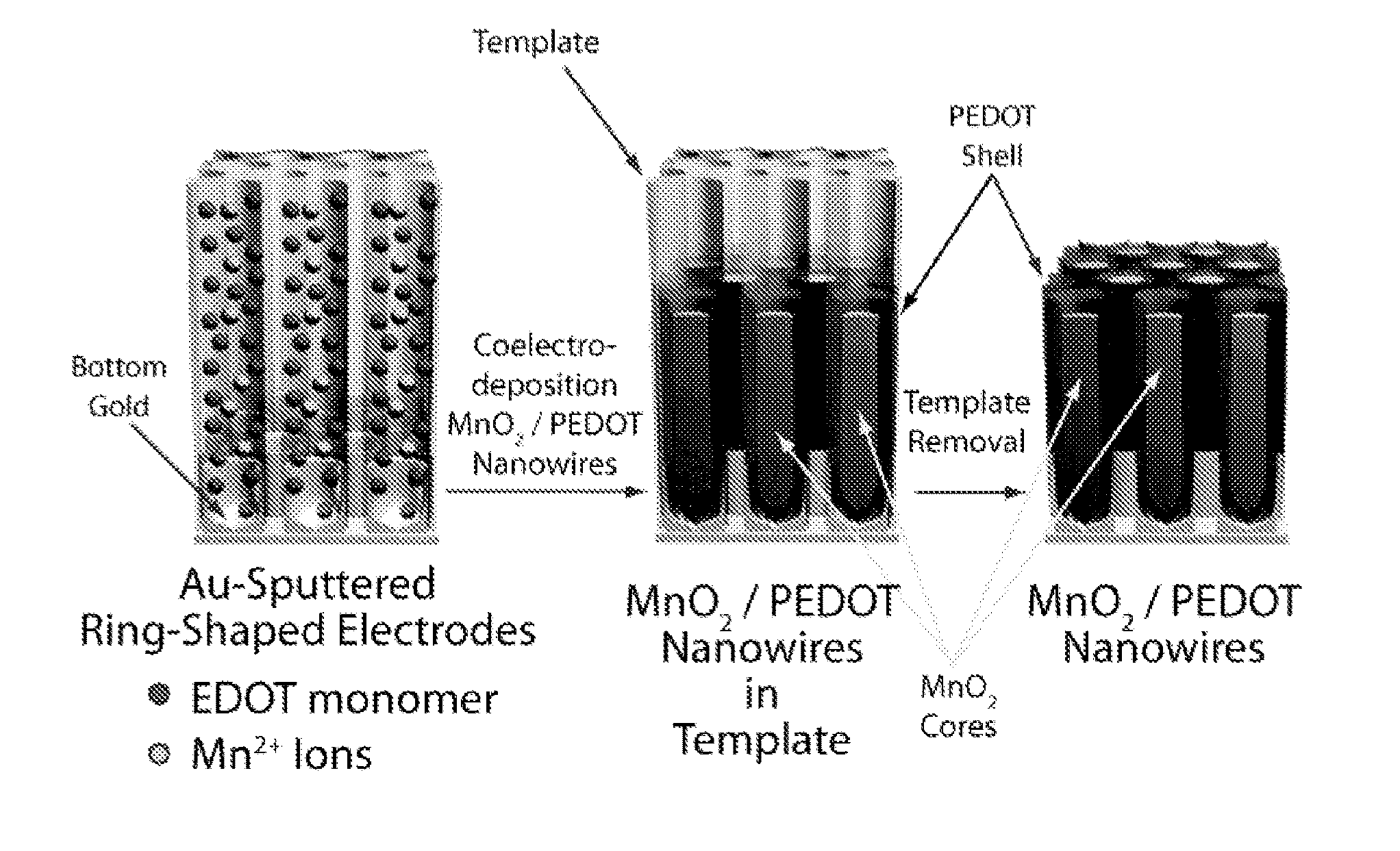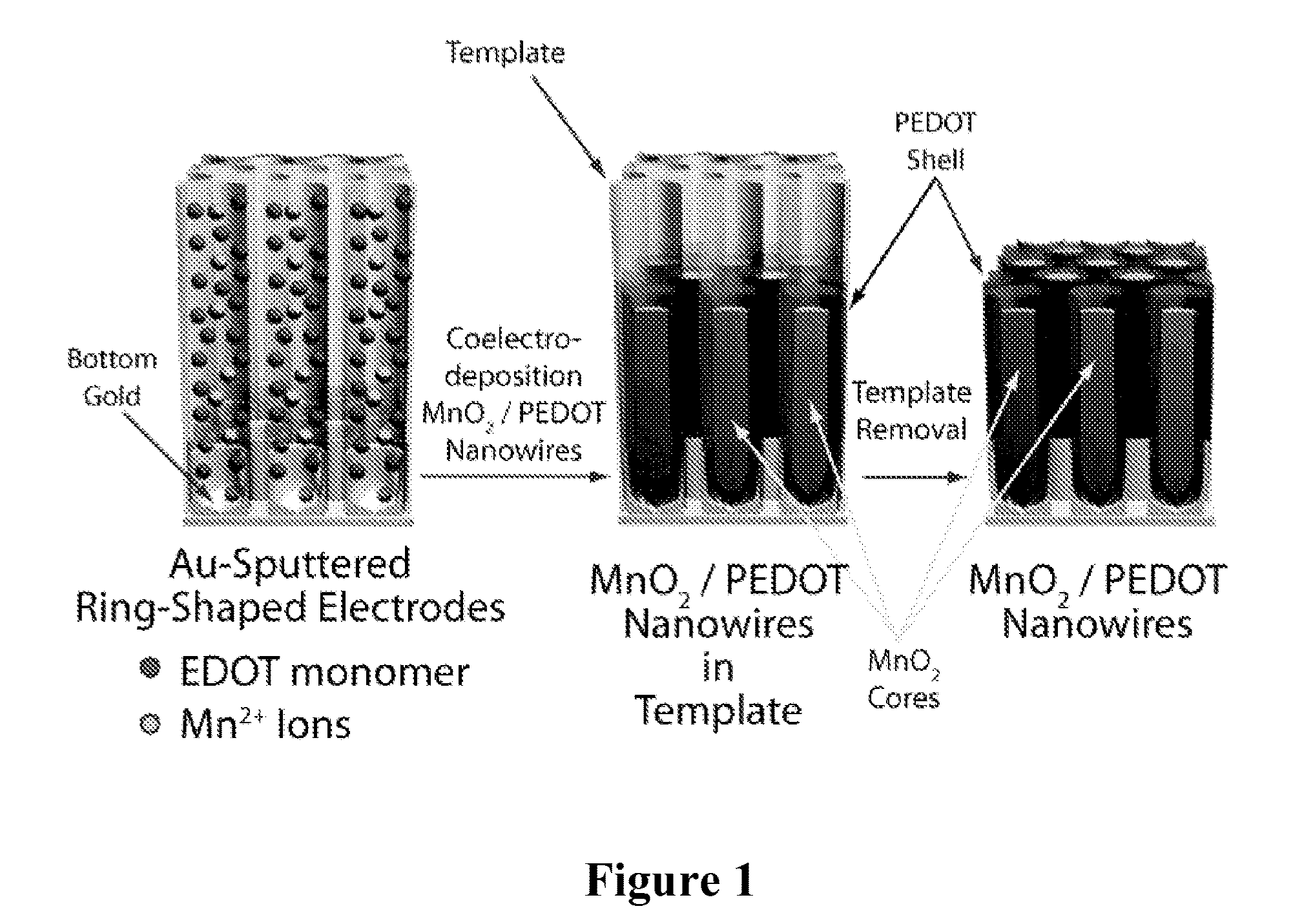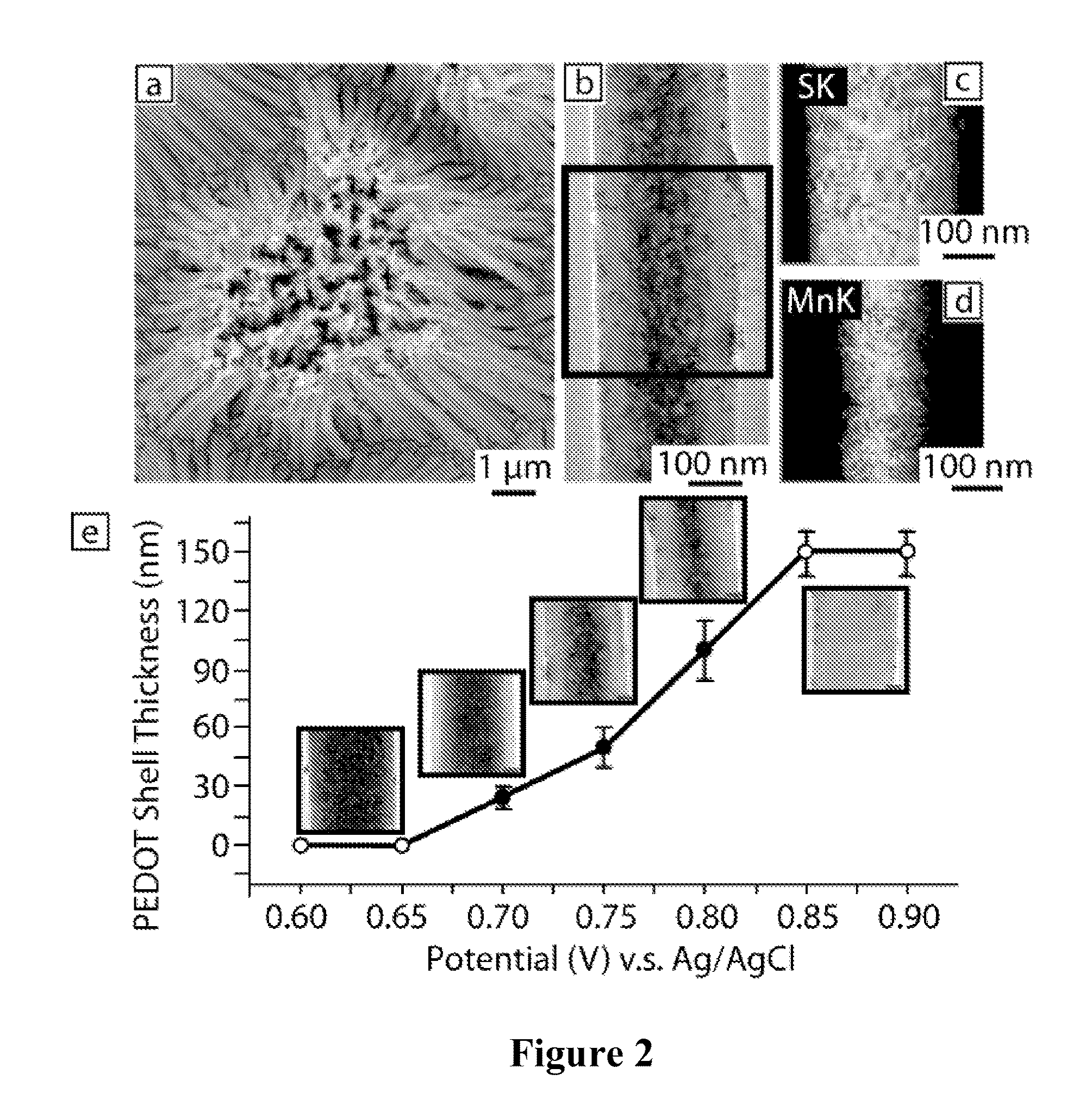High-Powered Electrochemical Energy Storage Devices and Methods for Their Fabrication
- Summary
- Abstract
- Description
- Claims
- Application Information
AI Technical Summary
Benefits of technology
Problems solved by technology
Method used
Image
Examples
example 1
Production of MnO2 / Poly(3,4-ethylenedioxythiophene) Coaxial Nanowires by One Step Coelectrodeposition
Experimental Section
[0076]Chemicals and Materials: 3,4-Ethylenedioxythiopene (EDOT), manganese acetate and lithium perchlorate (LiClO4) were purchased from Sigma Aldrich (Milwaukee, Wis.). Sodium dodecyl sulphate and sodium sulfate were obtained from Fisher Scientific (Fair Lawn, N.J.). De-ionized water (ca. 18 MΩ·cm−1 in resistivity) was made by a Milli-Q water purification system (Millipore; Dubuque, Iowa). Alumina membranes of 200 nm in pore diameter and 60 μm in thickness are commercially available from Whatman (Clifton, N.J.). Indium tin oxide (ITO) glass (Rs=4-8 ohms, thickness 1.1 mm) was commercial available from Delta Technologies Limited.
[0077]Synthesis: Coaxial MnO2 / PEDOT nanowires were synthesized potentiostatically at 0.7-0.8 V an aqueous solution of 10 mM manganese acetate, 80 mM EDOT, 100 mM LiClO4 and 140 mM SDS (pH=6.5). MnO2 nanowires were synthesized at 0.75 V in a...
example 2
Electrochemical Properties of Coaxial Nanowires
[0088]An electrochemical supercapacitor is an electrochemical energy storage device that provides high power while maintaining its energy density (or specific capacitance) at a high charge / discharge rate. To determine whether the above-described coaxial nanowires could be used to produce an electrochemical supercapacitor, the electrochemical properties of the coaxial nanowires were investigated.
[0089]Specific capacitance values of coaxial nanowires (grown at 0.75 V), MnO2 nanowires, PEDOT nanowires, and MnO2 thin film at different current densities are shown in FIG. 11.
[0090]The coaxial nanowires not only exhibit high specific capacitance values but also maintain them well at high current density compared to the others. As shown in FIG. 11, the coaxial nanowires preserved 85% of its specific capacitance (from 210 to 185 F / g) as the current density increases from 5 to 25 mA / cm2. These specific capacitance values are comparable to those o...
example 3
Poly(3,4-ethylenedioxythiophene) Nanotubes as Electrode Materials for a High-Powered Supercapacitor
[0092]The supercapacitive properties of the PEDOT nanotube arrays of the present invention, electrochemically synthesized in the cylindrical pores of an alumina template membrane, were investigated.
[0093]The micron-long, thin-walled nanotubular structures of such arrays enable one to develop a supercapacitor exhibiting both a high power density and high energy density (or specific capacitance). An alumina membrane is used as the template to direct the growth of PEDOT nanotubes owing to advantages in tailoring the diameter and length of desirable nanomaterials. The PEDOT nanostructures were synthesized by an electrochemical method rather than a chemical one to provide higher conductivity (Heywang et al. (1992) “Poly(alkylenedioxythiophene)s—New, Very Stable Conducting Polymers,” Adv. Mater. 4:116-118; Martin C. R. (1995) “Template Synthesis of Electronically Conductive Polymer Nanostruc...
PUM
| Property | Measurement | Unit |
|---|---|---|
| Fraction | aaaaa | aaaaa |
| Electric potential / voltage | aaaaa | aaaaa |
| Electric potential / voltage | aaaaa | aaaaa |
Abstract
Description
Claims
Application Information
 Login to View More
Login to View More - R&D
- Intellectual Property
- Life Sciences
- Materials
- Tech Scout
- Unparalleled Data Quality
- Higher Quality Content
- 60% Fewer Hallucinations
Browse by: Latest US Patents, China's latest patents, Technical Efficacy Thesaurus, Application Domain, Technology Topic, Popular Technical Reports.
© 2025 PatSnap. All rights reserved.Legal|Privacy policy|Modern Slavery Act Transparency Statement|Sitemap|About US| Contact US: help@patsnap.com



